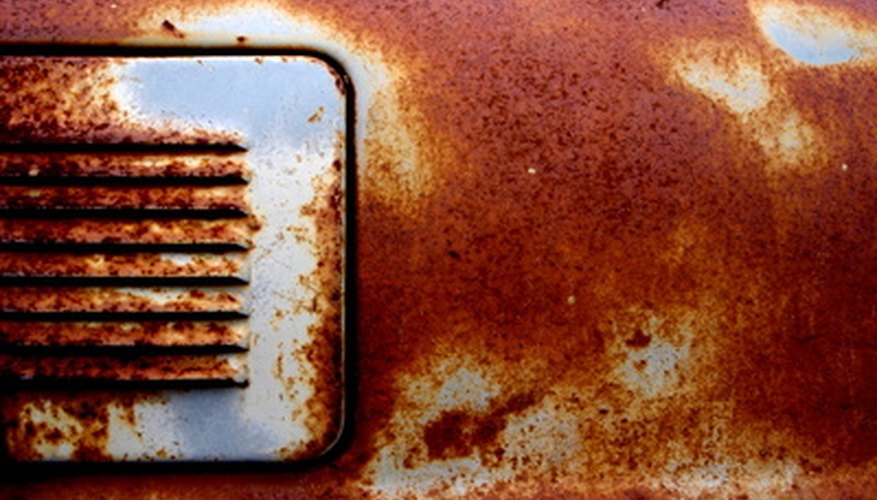A plastic coating is applied to metal, wood and other materials in order to protect them from corrosion. This method is also known as powder coating, since plastic resins and a solvent are mixed together as a powder and then sprayed onto a surface. It is then put in a hot oven to melt the powder onto the surface. The technology is an environmentally friendly, versatile and quick way of protecting a surface; however there are also disadvantages to using the process.
Difficult to Remove
Removing a plastic coating is difficult because when it is fired, the plastic bonds securely to the surface it is sprayed on. The coating also covers all crevices, corners and edges of the surface. When it was applied, it was not selective to the area it stuck to. Therefore, it can be challenging to completely remove the plastic coating. Scrubbing or using a harsh abrasive are two methods to use; however both are labour intensive and not precise ways of removing the plastic.
- Removing a plastic coating is difficult because when it is fired, the plastic bonds securely to the surface it is sprayed on.
- Therefore, it can be challenging to completely remove the plastic coating.
Specialist Procedure
Coating a material in plastic requires specialist tools and equipment. Either the object is submerged in molten plastic or more commonly, it is powder-coated using a spray gun. The object is then left to harden. This is problematic because it is not possible to perform either of these procedures at home. Even though a plastic coating a reliable and durable form of protection, it becomes more expensive because you need to pay a professional to perform the job for you. For example, the chemicals used during powder coating require careful temperature control.
- Coating a material in plastic requires specialist tools and equipment.
- Even though a plastic coating a reliable and durable form of protection, it becomes more expensive because you need to pay a professional to perform the job for you.
Thin Coating
If a powder coating has been used to cover the surface of an object, the resultant coating is very thin. The disadvantage with this is that pinholes can appear on the surface from wear and tear. These can lead to corrosion. Furthermore, if it is knocked against a sharp object, the coating is scraped off easily. Once again, this can lead to oxidisation of the metal underneath and therefore rusting. It can also be difficult to obtain an even coating of plastic because a spray is used and there is no way to control where the particles land on the object's surface.
- If a powder coating has been used to cover the surface of an object, the resultant coating is very thin.
- It can also be difficult to obtain an even coating of plastic because a spray is used and there is no way to control where the particles land on the object's surface.
